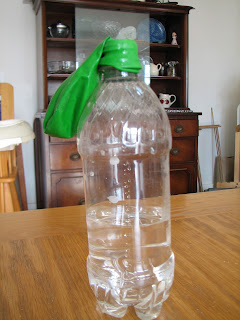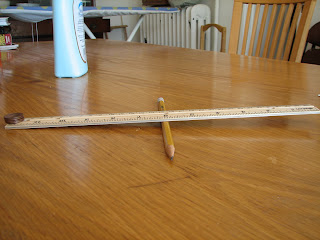Shake Tables
To test just how earthquake resistant the structures are, you may want to invest in a shake table. You can find these in various science supply catalogs or a quick Internet search will turn up instructions for tables you can build yourself using supplies found at a hardware store.
I built one of those tables (and by that I mean that my husband built one for me using directions I found) and truth be told, it was big and heavy and didn't work as well as I would have liked given the time and effort put into it. My kids were far more into the process than the final testing and it probably would have worked just as well to strap their buildings to a skateboard (or better yet, those carts they use in phys ed, with casters so they can move in all directions) and shake them around that way.
Final Write-Up
I had the students assemble a final write-up for the whole project. Each member of the group was responsible for part of it and it was all compiled into one packet which was submitted to me.
Architect:
An essay answering the following:
- Describe your group's design idea
- Why did you decide on that design?
- How did your design stand up to the "earthquake"?
- What changes would you make to your design if you were to do this project again?
- What are the challenges of acting as the team's architect?
Foreperson:
An essay answering the following:
- Describe the way in which your group members worked together - did you divide up the tasks or share all of them?
- What could be done to improve the way your group worked together, without changing group members?
- What strategies would you recommend to a future foreperson to help them help their group work well together?
Buyer:
An essay answering the following:
- Describe the materials used to build your structure.
- Why did your group choose to use those?
- What materials would you like to have available for this project?
- You built a model. If you were to actually build this structure, what materials would actually be used (instead of Popsicle sticks, hot glue, felt, etc.)?
Accountant:
An essay answering the following:
- Do you think your group spent their money wisely? Explain.
- What could your group have done to save money?
- What are the challenges of acting as the accountant?
- In the "real world", what expenses would a company have besides materials and employee salaries?
- What would happen if you went over-budget in the "real world"?
Evaluation
I've evaluated the project in different ways. Here are some areas you may wish to consider when evaluating your students' work:
--Designing & Building the Model - use of construction methods and materials
--Testing and Improving the Model - was effort made to test and improve the model along the way?
--Final Product Performance - how did it hold up on the shake table?
--Blueprint
--Final Write-up - well-organized, interesting, clear
--Working Cooperatively with Classmates
--Budget
--Promptness and Completeness
Some years I've given students the opportunity to grade their team members and factored that into their grades
I've also asked them to answer the following questions
--Describe the successes and failures of your group's procedure.
--Evaluate your performance in the group effort. What did you do? Should you have done more? Should you have let others do more?
--Evaluate your group memebers' effort. Did they work well together? Did everyone participate? What could be done to make the group work better together (without changing group members)?
pdf Files
Here's the part you've been waiting for patiently for two weeks - the pdf files you can download - I imagine you'll want to change them to meet your needs, but it's a starting point.
Quake & Shake Challenge (this the project information sheets and checks for the accountants to use)
Quake & Shake Account (sheet to use when purchasing materials for the groups)
Earthquake Write-Up (final write-up requirements)
Once again, please let me know if you are familiar with the original version of this activity so I can give proper credit - the bulk of this is not original to me.
Email me or leave a comment with any questions you may have along the way.
And, most of all, have fun with this! It takes a bit of prep work to get it going, but once you've done it, your students will work independently for several days and have a fabulous time doing so.













































